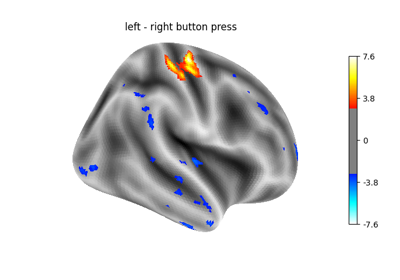Note
This page is a reference documentation. It only explains the class signature, and not how to use it. Please refer to the user guide for the big picture.
3.9.1. nistats.contrasts.Contrast¶
-
class
nistats.contrasts.Contrast(effect, variance, dim=None, dof=10000000000.0, contrast_type='t', tiny=1e-50, dofmax=10000000000.0)¶ The contrast class handles the estimation of statistical contrasts on a given model: student (t) or Fisher (F). The important feature is that it supports addition, thus opening the possibility of fixed-effects models.
The current implementation is meant to be simple, and could be enhanced in the future on the computational side (high-dimensional F constrasts may lead to memory breakage).
-
__init__(self, effect, variance, dim=None, dof=10000000000.0, contrast_type='t', tiny=1e-50, dofmax=10000000000.0)¶ - Parameters
- effectarray of shape (contrast_dim, n_voxels)
the effects related to the contrast
- variancearray of shape (n_voxels)
the associated variance estimate
- dim: int or None,
the dimension of the contrast
- dofscalar
the degrees of freedom of the residuals
- contrast_type: {‘t’, ‘F’}
specification of the contrast type
-
effect_size(self)¶ Make access to summary statistics more straightforward when computing contrasts
-
effect_variance(self)¶ Make access to summary statistics more straightforward when computing contrasts
-
p_value(self, baseline=0.0)¶ Return a parametric estimate of the p-value associated with the null hypothesis: (H0) ‘contrast equals baseline’
- Parameters
- baselinefloat, optional
baseline value for the test statistic
- Returns
- p_values1-d array, shape=(n_voxels,)
p-values, one per voxel
-
stat(self, baseline=0.0)¶ Return the decision statistic associated with the test of the null hypothesis: (H0) ‘contrast equals baseline’
- Parameters
- baselinefloat, optional
Baseline value for the test statistic
- Returns
- stat: 1-d array, shape=(n_voxels,)
statistical values, one per voxel
-
z_score(self, baseline=0.0)¶ Return a parametric estimation of the z-score associated with the null hypothesis: (H0) ‘contrast equals baseline’
- Parameters
- baseline: float, optional,
Baseline value for the test statistic
- Returns
- z_score: 1-d array, shape=(n_voxels,)
statistical values, one per voxel
-


